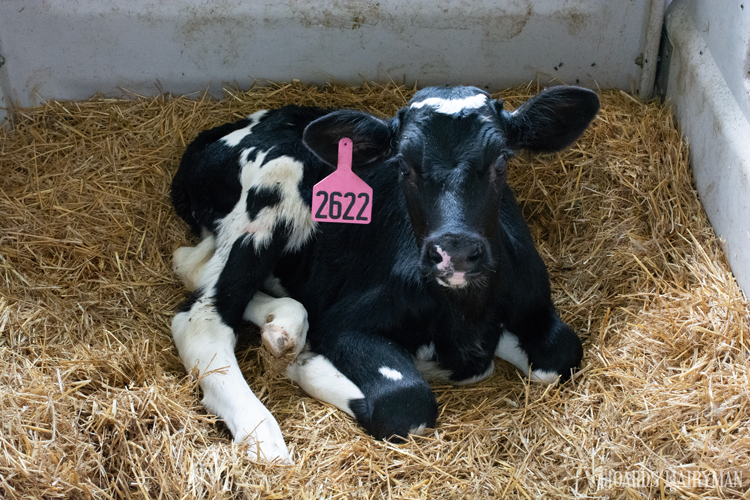
Making the transition from winter to spring can be hard on dairy calves due to drastic fluctuations in temperature. In a recent Professional Dairy Producers (PDP) "Dairy Signal" webinar, Chelsea Holschbach, D.V.M, shared some tips when it comes to dialing in on the winter to springtime transition.
When wet calves are hitting the ground during cold snaps, it is crucial to ensure that their body temperature is in the thermoneutral zone. The thermoneutral zone is the environmental temperature at which a calf does not expend any additional energy to maintain its body temperature. Newborn calves do not have enough fat storage to protect body temperature compared to calves older than 1 month of age.
Holschbach stated that calves less than 1 month old have a thermoneutral body temperature that ranges between 50°F to 78°F, while calves 1 month or older range from 32°F to 73°F. She suggested the utilization of calf jackets after the calf has been dried off, or the use of warming boxes and rooms to help the calf get dry and warm. These have gained popularity over the years but can be tough to manage if proper cleaning protocols are not followed.
To meet industry standards, feeding 10% to 12% of a calf’s body weight of colostrum within the first two hours of birth is highly recommended, noted Holschbach. If supplementing with a colostrum replacer, there are many options available for purchase, but they are not all the same. Knowing what is going into your colostrum is important, as replacers can be expensive. Feeding 150 to 200 grams of immunogloblin (IgG) at a minimum to meet protein standards is also advised, although calves may need up to 300 grams of IgG to meet current total protein standards.
By 2 weeks of age, the standard Holstein calf should be consuming at a minimum 8 quarts a day over two to three feedings. It is also important to note that greater liquid intake may reduce starter intake. While aiming to feed 12.5% of total solids, understand that any changes in adjusting total solids will have a direct impact on the calf. Inconsistencies in milk feeding practices and increased osmolality of the liquid diet delays gastric emptying and can cause clostridial overgrowth — which can lead to abomastitis, abomasal ulcers, or even acute death, she cited. “Any time we institute any feeding changes, it needs to be done gradually over a few days,” said Holschbach.
Fluctuations in temperature this time of year also play a big role in calf respiratory health, so it is important to make sure ventilation systems are adjusted appropriately. Make it a point to provide proper training to on-farm employees on how to adjust these systems with weather changes. This will make the winter to springtime transition go much more smoothly for your calf rearing program, Holschbach said.








